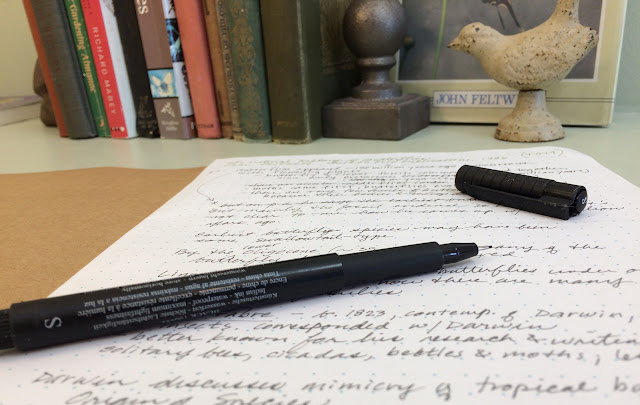One day last week I got out into the garden early so that I could do a little weeding in the shade. The chamomile, which scatters its seeds rather widely next to the fence where I was working, was still shaded also, and so its petals drooped, awaiting the sunlight.
 |
| Drooping petals await the morning sun. |
 |
| The flowers open, the flower flies come. |
It made me think of a poem by Japanese poet Ryokan (even though it's about butterflies).
The flower invites the butterfly with no-mind;
The butterfly visits the flower with no-mind.
The flower opens, the butterfly comes;
The butterfly comes, the flower opens.
I don't know others,
Others don't know me.
By not-knowing we follow nature's course.
[From Dewdrops on a Lotus Leaf: Zen Poems of Ryokan, trans. by John Stevens. Shambhala Publications, 2004.]
 |
| Harvesting chamomile on a not-so-hot day in the garden |
I try to keep up with harvesting the blossoms to dry for tea, not so much because I drink a lot of chamomile tea, but because if I let them all go to seed, they stop blooming and the plants dry up and that's the end of it. If I keep harvesting, they will keep blooming all summer. I don't worry about picking so many that I keep it from reseeding; it's really not possible to do that.
 |
| A thumbnail is a very handy tool for separating the blossoms from the stems. |
A lot of the flowers were already past their peak and destined for the compost, so I placed my harvest basket on the table to hold a handful at a time from the bucket where I had put all the cuttings, with my paper bag between my feet for dropping in the blossoms. A second bucket collected the compostable leftovers.
 |
| A mass of chamomile stems and flowers in the shade of the patio. |
For drying the flowers, I use a grocery bag that's been cut down to half its height, plucking the blossoms so they fall into the bag until there's enough for a single layer at the bottom, then set the bag on a table in a dark spot in the garage where they won't get sunlight to turn them brown, and leave them for several days to dry; I leave the bag open for maximum air circulation. We don't put our car in the garage in summer (much easier to get our bikes in and out that way), so there's no exhaust fumes to spoil the herbs.
 |
| A glass of iced tomato-veggie juice aids the harvest on a hot day. |
I've got some spearmint growing in a pot this summer, so I'll be sure to dry some of that, too. It complements the chamomile very nicely in an herbal tea blend, which tastes pretty good iced on a summer evening, when shade from the house falls on the patio and reaches across the backyard.
Pretty soon the chamomile is shaded too, and the petals fold down, as if tucking themselves into bed for a good sleep before the morning's visitors arrive.
 |
| Chamomile with poppy petals and a tiny bee (probably Ceratina genus), on a morning in July. |



















